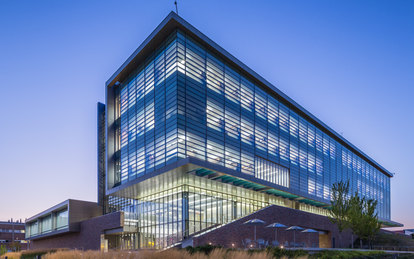The Evolution of the Engineering Building

In March 2016, SmithGroup convened in San Francisco, California to host an Advisory Board discussion in conjunction with the Engineering Deans Institute Annual Conference. During this session, 13 deans, designers, architects and laboratory specialists joined together for a highly interactive dinner discussion focused on how facilities can build bridges between education and industry, support entrepreneurship and exploration, and encourage interdisciplinary and team-based collaboration.
During the conversation it became clear that -- It’s all about creating connections -- with industry; tools and technology; peers and faculty; and, of course, with space. Making these connections for students is what drives innovation and prepares these individuals for today’s workforce.
Higher education institutions are fertile recruiting grounds for up-and-coming engineers at leading companies around the globe. Yet, engineering schools are challenged to produce students that are fluent in collaboration, problem-solving and entrepreneurship. To shift this paradigm, colleges and universities need flexible, open and transparent spaces that support evolving pedagogies and team-based research and learning.
Today’s engineering schools also need space that facilitates industry partnerships, and the evolution of these partnerships over time. Designing for flexibility, collaboration, privacy and security are all key design drivers when planning for industry space in academia. Rethinking how intellectual property rights are organized on campus can also help to enhance collaborations with industry.
Finally, today’s students must understand that their educational experiences are not merely about grades – this experience must also incorporate what they DO and what they make. This requires a new ecosystem of learning spaces, including the creation of extra-curricular spaces where students can conceptualize, visualize and prototype the manufacturing of their ideas. In these spaces, students can not only “make,” but they can also interact and collaborate with industry representatives. Additionally, they can make memories that will stay with them for years to come.